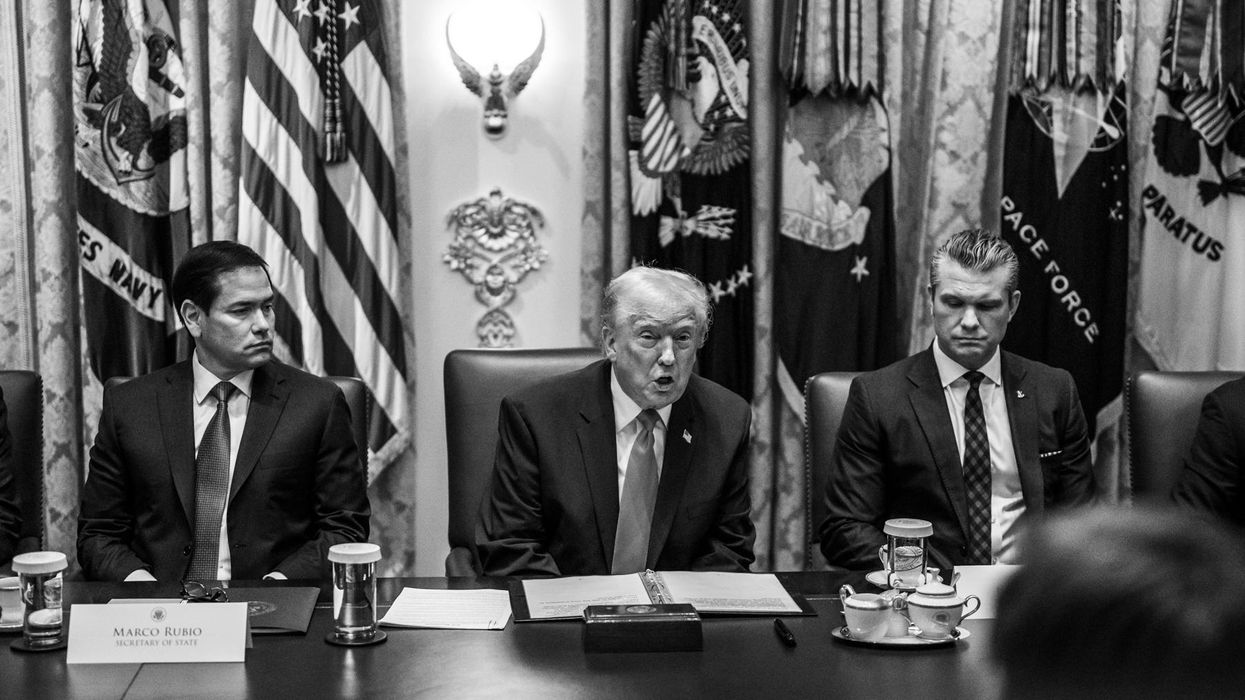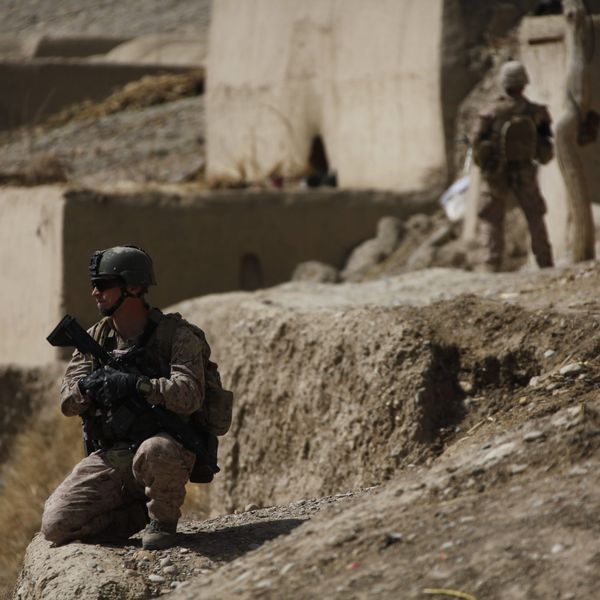Foreign policy has hardly featured in the Democratic primary, but with tonight’s debate looming, it’s worth looking back at an important point that came up in the October 15 debate in Ohio, when Senator Elizabeth Warren accidentally told the truth. “I think that we ought to get out of the Middle East,” she said. “I don't think we should have troops in the Middle East… There is no military solution in this region.”
Advocates of open-ended military engagement in the region were aghast. Washington Post columnist Josh Rogin tweeted, “So rolling up bases in Iraq, Qatar, Bahrain, Jordan, UAE, Saudi, Kuwait and Oman? That should be an interesting four years.” The Warren campaign scrambled to clarify she meant combat troops, not forward bases. Rogin was unsatisfied, following up with a column denouncing Warren for “failing the commander-in-chief test” and quoting Joe Biden’s criticism that “I have never heard anyone say, with any serious background in foreign policy, that we pull all troops out of the Middle East.” Rogin’s Washington Post colleague Jennifer Rubin chimed in with a column denouncing Warren’s “extreme isolationism.”
Rogin, Rubin, and especially Biden should take notes here: A growing body of scholarship suggests the United States would do well to get out of the Middle East — a weak, poor region fraught with political problems the American military cannot solve.
In conventional power terms, the Middle East is ignorable. The region constitutes less than 4 percent of world’s Gross Domestic Product and roughly the same of world population. It hosts no major industrial power and no state with power projection capability outside the region. Policymakers instead point to three unconventional reasons for worrying about the region: oil, Israel, and terrorism.
As Daniel Byman of the Brookings Institution and Georgetown University writes, “ensuring the free flow of oil represents perhaps the most constant, and many would say the most important, U.S. interest in the Middle East.” The question is, how hard it is to make sure no country can threaten the ability of oil producers to get their product to market. The answer: not very.
Oil supply could be threatened, the argument goes, if Iran or Saudi Arabia could conquer the other state, take control of its oil supplies, and in so doing, develop an outsized influence over the price of oil. A variant on this worry was the basis for the Carter Doctrine: the idea that the Soviet Union could roll into Khuzestan and seize Iranian oil fields, taking them for itself.
The good news is that neither Iran nor Saudi Arabia can conquer the other, and there is no external actor that could conquer either state. Should Iran and Saudi Arabia engage in a full-on conventional war, supplies would no doubt suffer some disruption, just as they did during the 1980s, when Washington backed Iraq in the Iran-Iraq War.
But the limited sorts of disruptions that are more likely to happen do not justify a permanent, forward U.S. military presence in the region, even though Beltway types frequently act as if they do. For example, longtime Middle East commentator Steven Cook declared the recent attack on the Abqaiq facility was “the moment that decides the future of the Middle East,” writing that “if Trump does not respond militarily, the United States should just pack up and go home.”
A combination of several factors means that there is little reason to worry the oil taps will be turned off. First, there is considerable slack capacity, and there is likely to be so for the foreseeable future. Second, the economic incentives of other states make them likely to produce more when prices rise, whether due to a supply disruption or other cause. Finally, changes in financial markets have “enabled sophisticated spot and futures markets for oil, facilitating quick market adjustments and allowing producers, wholesalers, refiners, and major consumers to smooth risks.”
Another concern frequently raised but rarely spelled out is that Israel, a small country that is friendly with the United States, would be vulnerable without the U.S. military present in the region. This is simply false. There is no conventional military threat to Israel, and the terrorist threat it faces is not amenable to conventional American military power. It possesses a secure nuclear deterrent, and a large qualitative military edge against any conceivable combination of adversaries. It is difficult even to make the case that American attention to the region benefits Israel given the maelstrom of fanatical violence the past two decades of U.S. policy in the region has helped unleash.
When it comes to terrorism, it should be clear by now that the threat to the United States is smaller than we realized in the months after 9/11. But even in 2002, the sorts of people who deal with risk for a living were wondering in print “how much should we be willing to pay for a small reduction in probabilities that are already extremely low?” By now we should be able to answer definitively: Not nearly this much.
The U.S. military commitment to the Persian Gulf is expensive. Although it is difficult to precisely say how much it costs, one of the best recent estimates suggested removing the conventional commitment to the Gulf from U.S. defense planning — while allowing for intelligence and counterterrorism — would save between $60 and $75 billion every year. This is real money — resources that could be spent on other priorities, used to reduce the deficit, or returned to taxpayers.
There are growing signs voters recognize putting ourselves at the center of Middle East politics is not making us safer. In one striking example, a recent poll on the Middle East found that one in four Americans thinks that the United States should “remove itself entirely from the affairs of the region.” This is despite the political class and media elites assuring them of the region’s vital importance.
Whether Warren misspoke or not, the U.S. role in the region has been detrimental to the well-being of Americans. The arguments for the status quo policy in the region are surprisingly weak. The foreign policy elite’s obsession with the Middle East has sucked the oxygen out of discussions of more important issues like China and pressing domestic problems. Restraint, rather than continuing to make the region’s problems our own, would serve Americans better.
This article is adapted from a longer scholarly article on withdrawing from the Middle East.
















